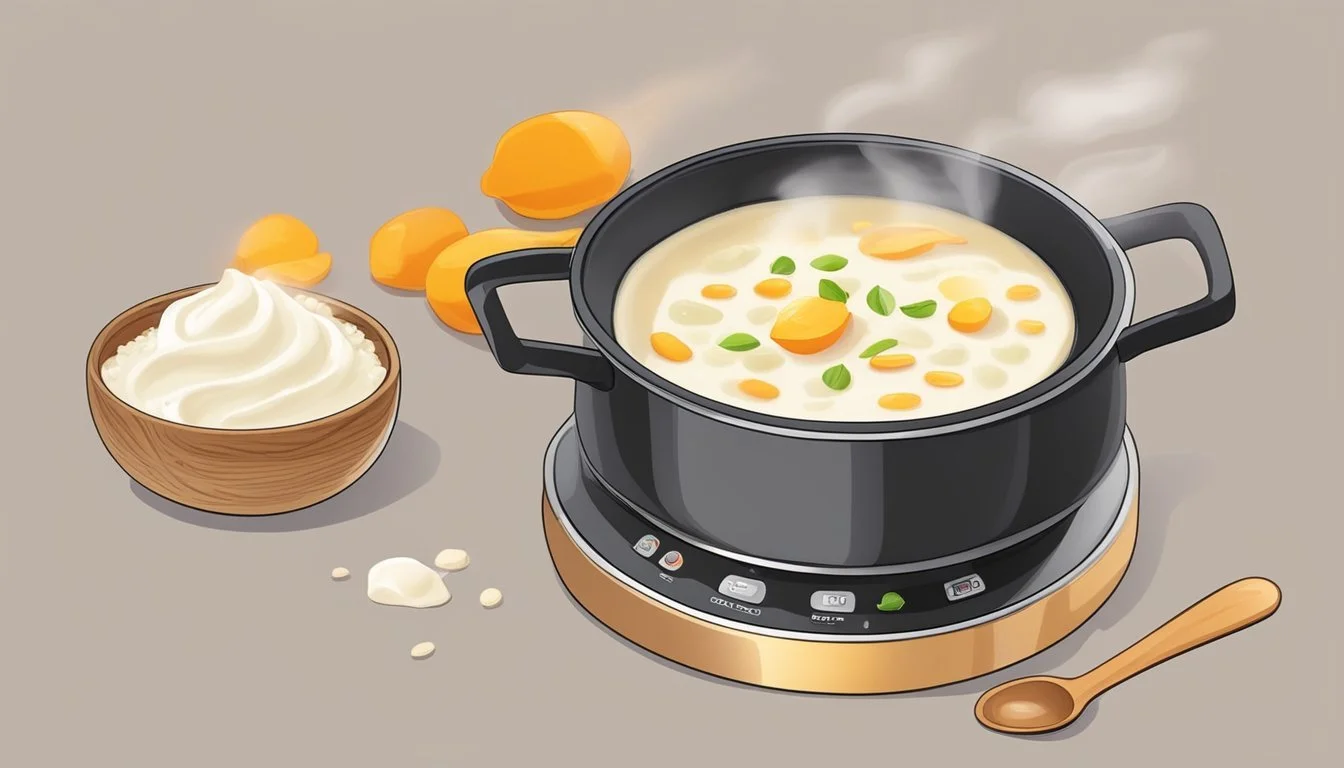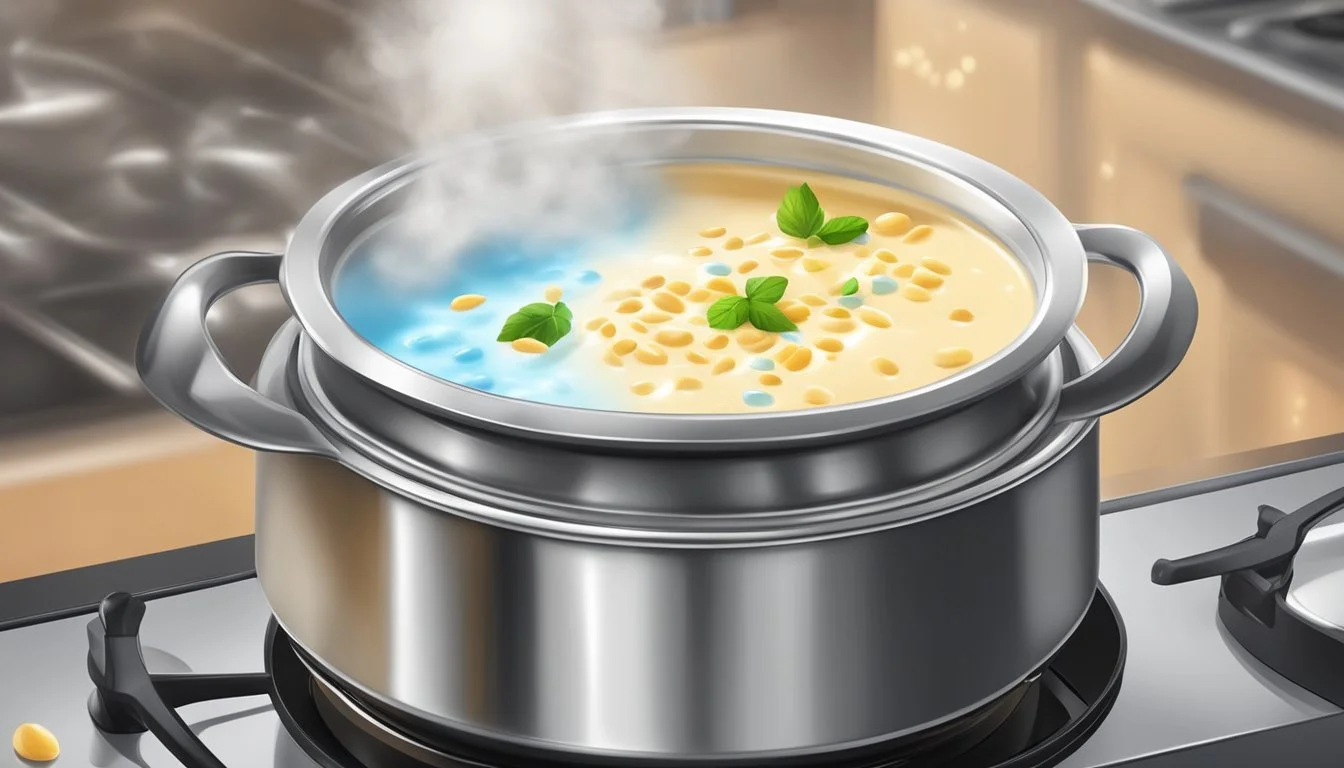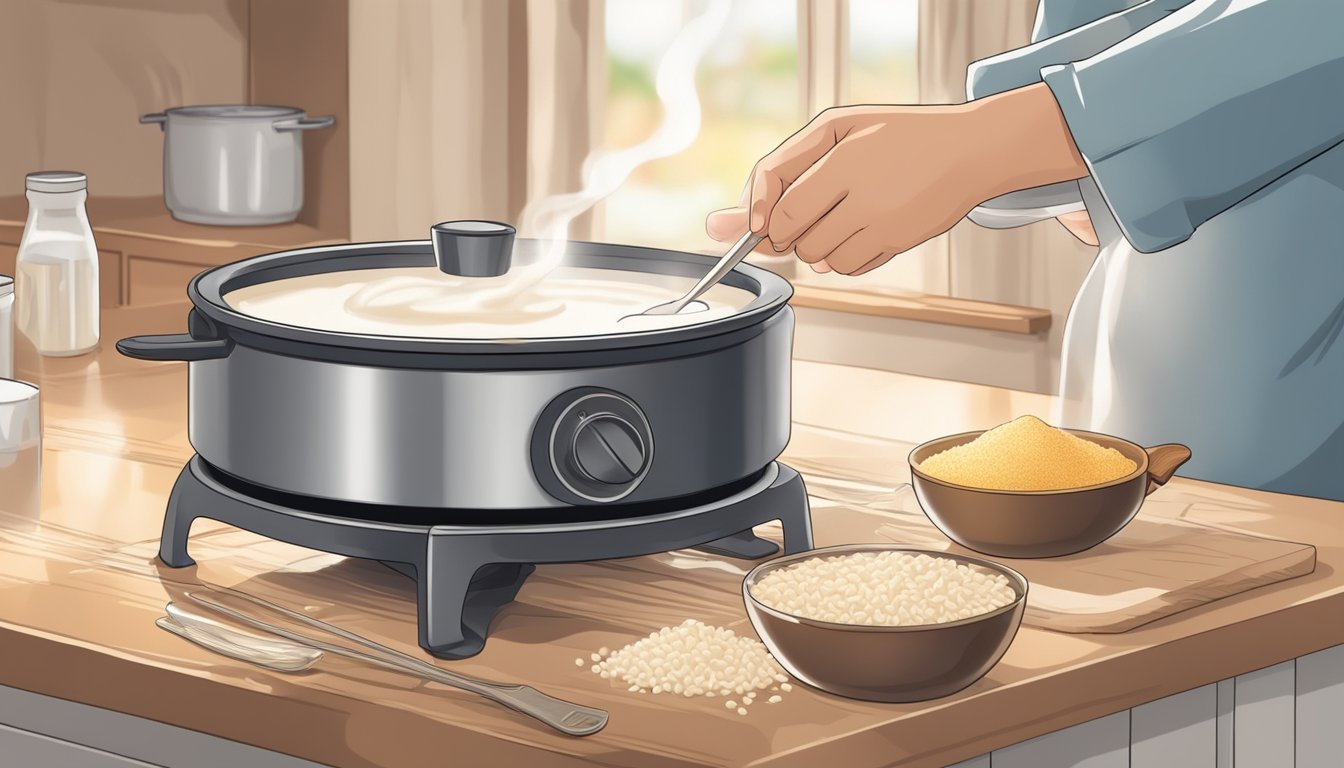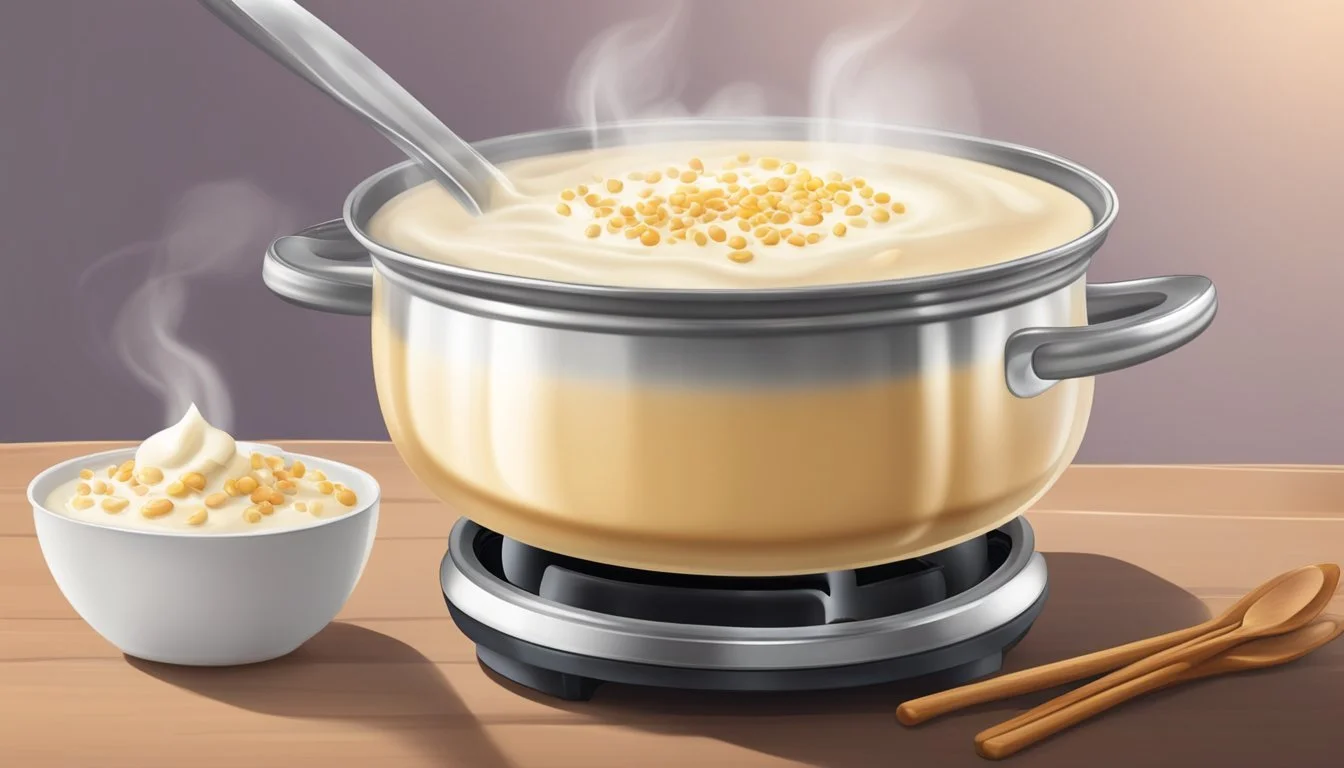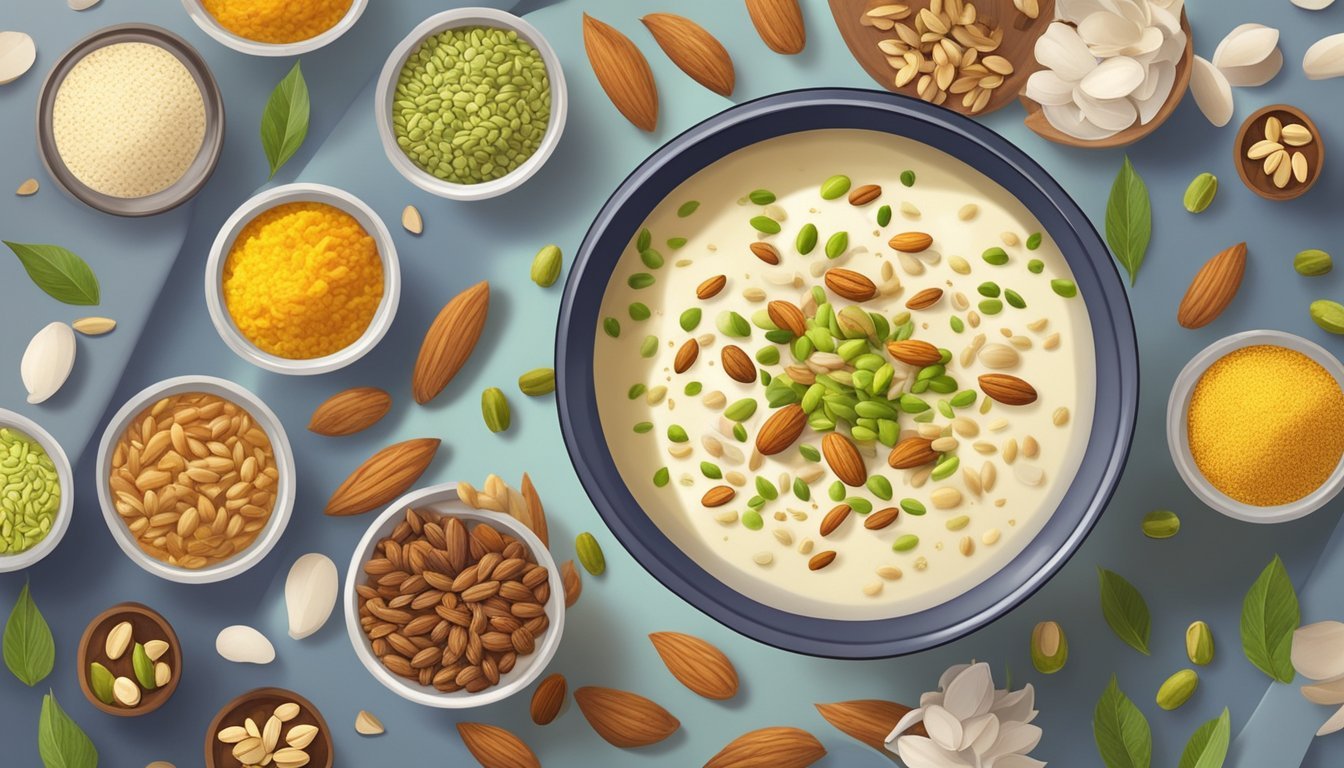Best Way to Reheat Kheer
Ensuring Creaminess and Sweetness Preservation
Reheating kheer, a traditional Indian rice pudding, requires careful attention to preserve its creamy texture and rich flavor. As a dessert that embodies comfort with its combination of rice, milk, and spices, kheer's delicate balance can be disrupted if not reheated properly. Striking the right temperature and method is key to enjoying this sweet dish as if it were freshly made.
Microwave and stovetop methods are popular choices for reheating kheer. In a microwave, kheer can be heated for short intervals, with frequent stirring to ensure even warmth throughout the dish. On the stovetop, the kheer is gently warmed over medium-low heat, again with periodic stirring, to prevent the rice from sticking to the bottom of the pan or the milk from forming a skin. Whether using the microwave or the stovetop, consistent stirring is important to maintain the pudding’s creamy consistency.
It's essential to slowly bring the temperature up, as high heat can cause the milk to separate and the rice to become overly soft. This gradual reheating process helps in preserving the luxurious taste and comforting quality of kheer, making it just as enjoyable as when it was first prepared. Maintaining the right heat and not rushing the process are small but crucial steps in ensuring that the reheated kheer matches the original's texture and flavor profile.
Understanding Kheer
Kheer is a classic dessert staple in Indian cuisine. Often referred to as rice pudding in the Western context, it intertwines the creamy texture of milk with the tender consistency of rice. The sweetness in kheer comes from sugar or sometimes jaggery, appealing to the palate with a gentle yet profound flavor.
Traditionally, kheer is made by cooking rice with milk until the grains are soft and the mixture has a rich, creamy thickness. The culinary tradition behind kheer is extensive, as it's commonly prepared during festivals and special occasions in India. This dessert is not only significant on a cultural level but also enjoyed for its comforting qualities.
Ingredients Typically Found in Kheer:
Rice: Basmati is a popular choice for its fragrance
Milk: Full-fat for creaminess
Sugar: For sweetness
Cardamom: A spice that adds a unique aroma
Nuts and Raisins: Often added for texture and flavor
Despite its simplicity, kheer's preparation is a delicate process. It requires patience and care to maintain the desired creamy texture without allowing the rice to stick to the bottom of the pan.
In terms of calories, kheer can be considered a high-calorie dessert, mainly because of the whole milk and sugar content. However, its delectable taste makes it a favored choice for a sweet indulgence.
Kheer has a versatile appeal due to its sweetness and creaminess, often enriched with cardamom, saffron, and nuts. It embodies the richness of Indian desserts (What wine goes well with desserts?) and is a testament to the subcontinent's diverse and flavorful culinary tradition.
Selecting the Right Ingredients
The choice of individual ingredients critically influences kheer's taste and texture. Selecting the highest quality components ensures a rich and delightful dessert experience.
Choosing Your Rice
For kheer, basmati rice is often preferred due to its long grains and fragrant aroma. When cooked, it provides a delicate and non-sticky consistency. One should opt for rice that is neither too old nor too fresh; aged basmati rice, in particular, imparts a more pronounced aroma.
Milk Varieties and Alternatives
Traditionally, whole milk is used for its rich and creamy texture. However, for a richer kheer, one might incorporate cream or condensed milk. For those looking for dairy-free alternatives, coconut milk or plant-based milk can be used, bearing in mind that these substitutes will alter the flavor profile.
Sweeteners and Flavor Enhancers
While sugar remains the conventional sweetener, alternatives like jaggery, honey, or maple syrup can offer deeper flavors. Coconut sugar is another option that adds a subtle caramel-like taste. The key is to balance the sweetness to enhance rather than overwhelm the dessert.
Spices and Nuts
Cardamom pods are essential for their unique, warm flavor, with saffron serving as another popular spice addition, imparting a distinctive color and aroma. Nuts such as pistachios, almonds, and cashews give textural contrast and richness, while raisins add natural sweetness and a chewy dimension.
Basic Kheer Recipe Guide
Preparing kheer, an Indian rice pudding, involves precise techniques and cook times to achieve its hallmark creamy texture and sweet flavor. This guide outlines the basic steps from preparation to cooking methods.
Kheer Preparation Techniques
To begin, rice should be thoroughly rinsed a few times and then soaked in water for about 15 to 20 minutes. Soaking ensures the rice cooks evenly and helps to attain the creamy consistency desired in kheer. In addition, some recipes call for vermicelli or tapioca, which can be used as an alternative to rice for a different texture.
Cooking Kheer on the Stove
For stovetop kheer, start by melting ghee in a heavy-bottomed pan and toss in fragrant spices like crushed cardamom pods. Add the drained rice and stir for a short period to ensure the grains become flavorful but not brown. Pour in milk—full-fat for a more authentic and creamy kheer—and bring to a boil before reducing the heat to let it simmer. Cooking time generally lasts between 40 to 50 minutes. Stir frequently to prevent sticking and promote even thickening.
Instant Pot Kheer Methods
For an Instant Pot kheer, combine rinsed rice, milk, sugar, and cardamom in the pot, selecting a manual pressure cooker setting, typically for about 20 minutes. Once cooked, allow the pressure to release naturally. The Instant Pot method reduces the total prep time and cook time, making it a convenient option for those seeking the same creamy taste without constant monitoring.
Additional Variations
While the base of kheer is simple, variations can include adding different types of sugar or non-dairy milk for a vegan kheer. One may also adjust the flavor with nuts, raisins, or saffron. Every variation should maintain the balance between the rice or substitute and the sweetness, ensuring that the final dish is not overly sweet or dense.
The Art of Reheating Kheer
Reheating kheer, a traditional Indian rice pudding, requires particular attention to maintain its distinctive creamy texture and sweet taste whether serving it warm or cold.
Reheating Techniques
To reheat kheer effectively, one has two primary options: microwave or stovetop. When using a microwave, place the kheer in a microwave-safe bowl, cover it loosely, and heat it in short intervals, stirring in-between to ensure even warmth throughout. The stovetop method involves placing the kheer in a heavy-bottomed pan and warming it over a low flame. One should stir it continuously to prevent sticking and ensure a uniform temperature.
Maintaining Creamy Texture
Preserving the creamy texture of kheer is crucial during the reheating process. To prevent the kheer from becoming too thick, one might need to add a small amount of milk while reheating. Continuous stirring is essential to maintain that luscious consistency and to avoid forming lumps.
Temperature and Consistency
Monitoring the temperature and consistency is vital for perfect reheating. Kheer should be simmered gently until it reaches the desired warmth. The aim is to heat it enough so that it is pleasantly warm to the touch but not hot enough to cause the ingredients to separate, ensuring a velvety texture that is delightful whether served warm or straight from an airtight container chilled in the fridge.
Serving and Presentation
When it comes to serving Kheer, the focus is on accentuating its creamy texture and sweetness, ensuring that it appeals to the sweet tooth while maintaining its traditional essence, especially during festivals and special occasions.
Ideal Presentation Styles
Kheer is traditionally served as a dessert course in individual bowls or one large serving dish. To highlight its creamy consistency, it is best to serve Kheer in a white or lightly colored bowl that contrasts with the rich colors of the accompaniments and garnishes.
Style Description Individual Serve in small bowls to emphasize portioning Family-Style Present in a large dish to share
Accompaniments and Garnishes
Garnishes are essential to enhance both the flavor and presentation of Kheer. A handful of nuts, such as slivered almonds, chopped pistachios, or raisins, adds a pleasant crunch. A pinch of saffron strands can introduce a delicate fragrance and a hint of luxury, elevating the overall dining experience.
Suggested Garnishes
Nuts: Almonds, Pistachios, Raisins
Spices: Saffron Strands, Ground Cardamom
Creative Serving Ideas
Presentation is key when serving Kheer for a celebration. Creative serving ideas include using glass cups for a layered appearance or earthenware pots for an authentic touch. One could also consider pairing Kheer with a small serving of a fragrant beverage like masala chai to complement the sweetness.
Serving Suggestions
Glassware: To showcase layers and colors
Traditional Pottery: For an authentic feel
Special Tips and Tricks
In reheating kheer, maintaining its creamy texture and sweet flavor is paramount. Through proper storage and reheating techniques, one can ensure kheer retains its delicate consistency and rich taste.
Maximizing Flavor
To enhance the flavor of kheer when reheating, consider adding a pinch of saffron or a few cardamom pods during the warming process. These spices are known to bloom in warmth, thus enriching the kheer with a more intense and aromatic profile.
Saffron: A few strands reinvigorate the color and add a subtle earthy note.
Cardamom: Crush the pods lightly to release the essential oils and remove them before serving.
Smart Storage Solutions
Kheer's shelf life directly affects its taste after reheating. Store it in an airtight container to preserve freshness and flavor. Refrigerate promptly and consume within two days for optimal taste.
Fridge Storage: Keep the temperature consistent to avoid sugar crystallization.
Freeze Option: For a longer shelf life, kheer can be frozen. Defrost in the fridge overnight before reheating.
Adjusting Textures and Consistencies
A proper reheating method can either reduce or thicken a kheer that has been stored for some time. A gentle heat allows one to control the texture more precisely, aiming for a creamy viscosity.
Reducing Liquid: Simmer on a low flame if kheer is too watery, allowing excess moisture to evaporate.
Thickening: Stirring in a small amount of milk or cream can help restore creaminess if kheer has become too thick.
The key is constant stirring at moderate temperatures to avoid burning the milk or separating the sweetener. One must monitor the kheer closely to ensure smoothness and consistency.
Health and Dietary Considerations
When reheating kheer, an individual must consider how the process may affect the dessert's nutritional value and accommodate dietary restrictions.
Calorie Content and Substitutions
Kheer is traditionally a calorie-dense dessert due to its primary ingredients: full-fat milk and sugar. One serving of kheer can contain roughly 200-300 calories, mostly from carbohydrates and fats. For those monitoring caloric intake, substitutions such as low-fat milk or sugar alternatives may be beneficial. Using a sugar substitute like stevia or a natural sweetener such as honey can reduce calorie content. However, this may alter the classic taste of kheer.
Ingredients for Calorie Reduction:
Low-fat milk
Sugar substitute (e.g., stevia, erythritol)
Natural sweeteners (e.g., honey, agave syrup)
Dairy-Free and Vegan Options
A dairy-free or vegan diet requires the omission of traditional cow’s milk. Substituting cow’s milk with a plant-based milk, such as almond, soy, or coconut milk, can make kheer suitable for those dietary restrictions. Coconut milk in particular offers a creamy texture that closely resembles the mouthfeel of traditional kheer.
Dairy-Free and Vegan Milk Alternatives:
Coconut milk
Soy milk
Oat milk
It is important for individuals with lactose intolerance or following a vegan lifestyle to ensure that all ingredients, including the sweeteners and garnishes, comply with their dietary requirements.
Cultural Significance of Kheer
Kheer is not merely a dessert but an integral part of Indian culinary tradition, deeply entrenched in the cultural fabric of celebratory events. It is synonymous with festivity and is as much a feast for the soul as it is for the palate.
Kheer in Indian Festivities
In India, festivities are incomplete without the inclusion of kheer, often called Indian rice pudding. This sweet delicacy becomes a centerpiece during major festivals such as Diwali and Holi, symbolizing joy and prosperity. Each region in India may have its own unique twist to the recipe, aligning with local tastes and ingredients, but the essence of kheer as a celebratory dessert remains consistent.
Diwali: Known as the festival of lights, kheer is prepared to mark the victory of light over darkness.
Holi: The festival of colors also sees kheer as a way to celebrate the arrival of spring and the triumph of good over evil.
Kheer Across Different Cuisines
While kheer is fundamentally an Indian dessert, its variations can be found in other South Asian cuisines, reflecting the shared history and cultural exchange in the region. Each culture adapts it to local tastes, which often results in kheer bearing a different name and featuring varying ingredients.
Pakistani Cuisine: Known as kheer, it frequently contains vermicelli, sago, or rice.
Bengali Cuisine: Here it is called payesh and is often cooked during the Bengali New Year and wedding celebrations.
The dessert stands as a testament to India's rich culinary diversity, with its ability to bring people together during times of celebration. Its creamy texture and sweet flavor are cherished across borders, making it a beloved treat in various cuisines.

